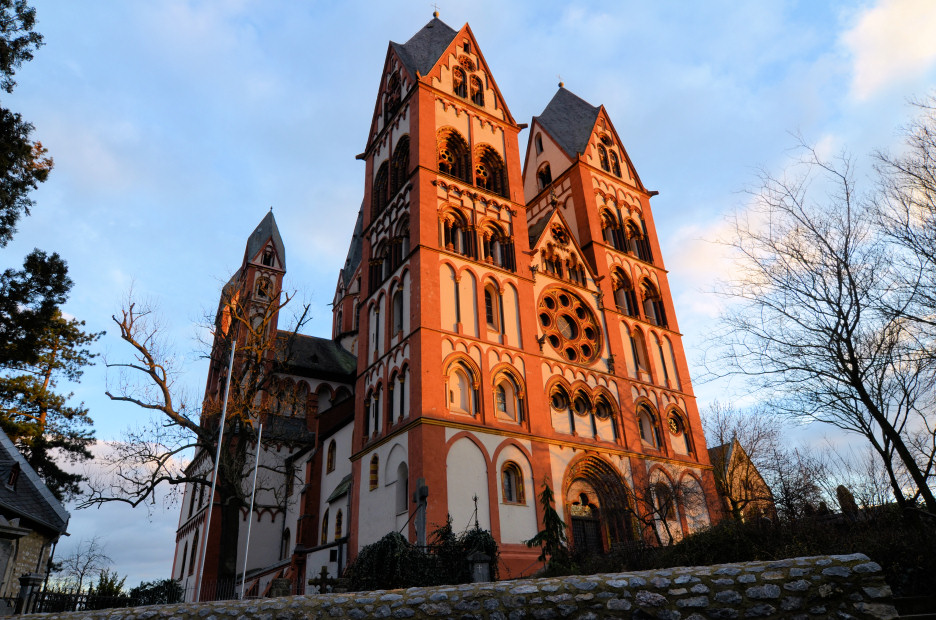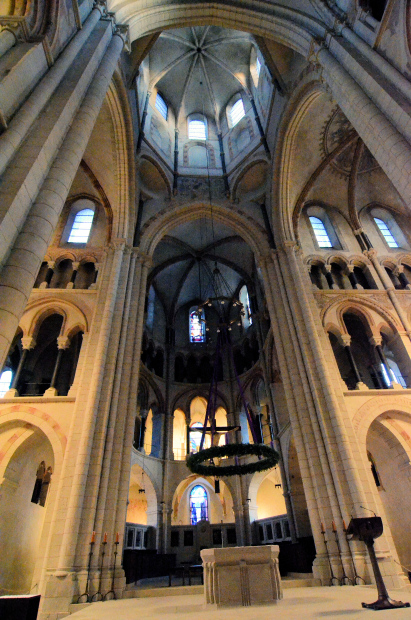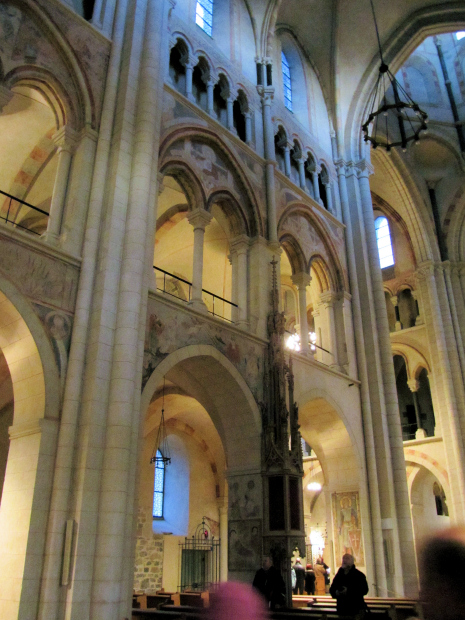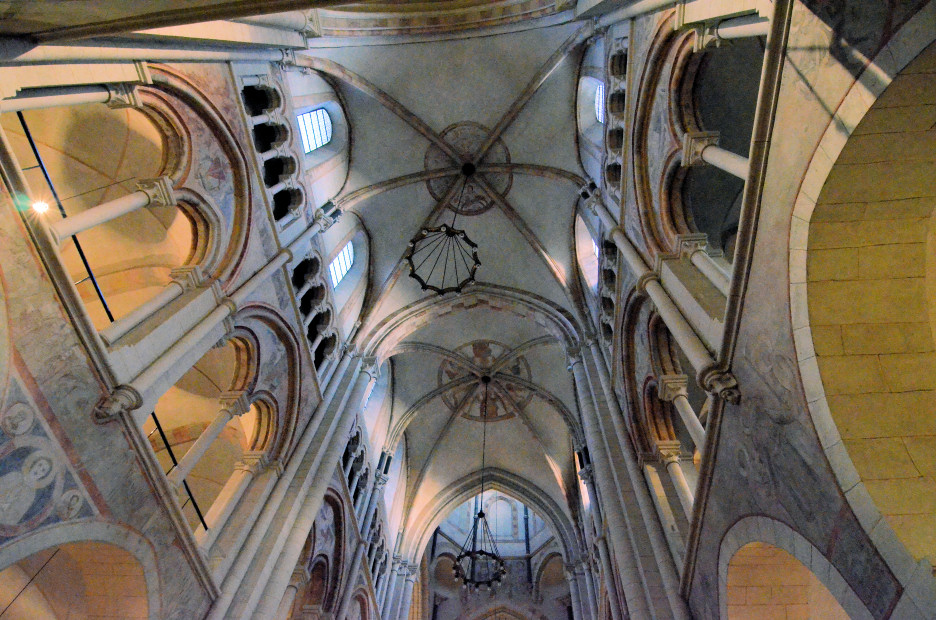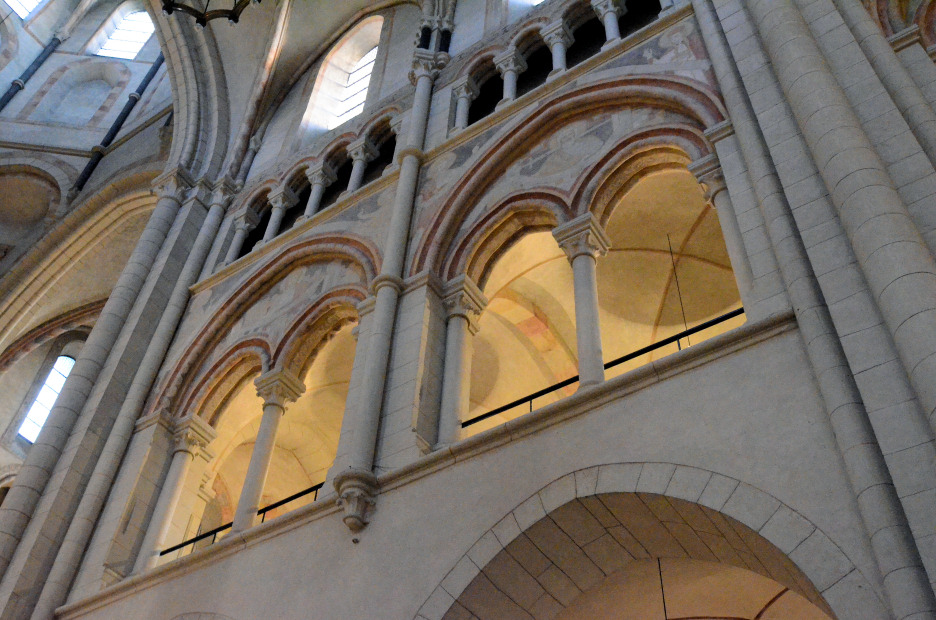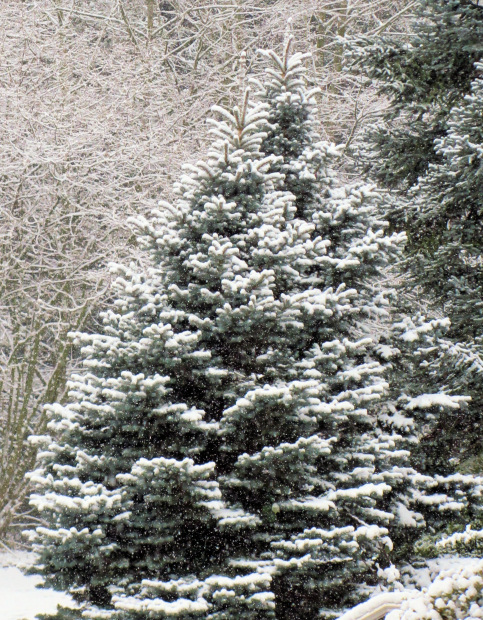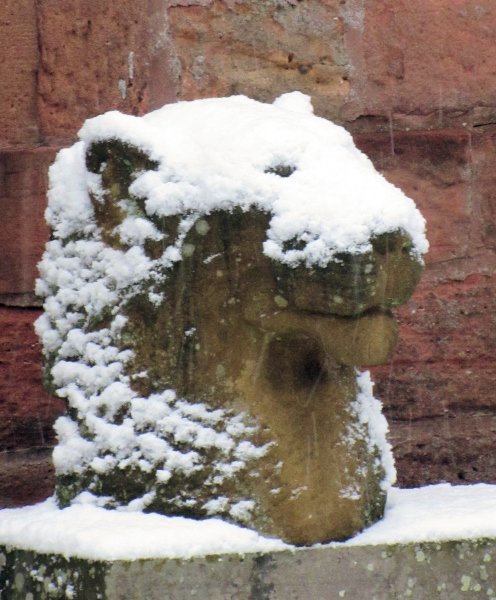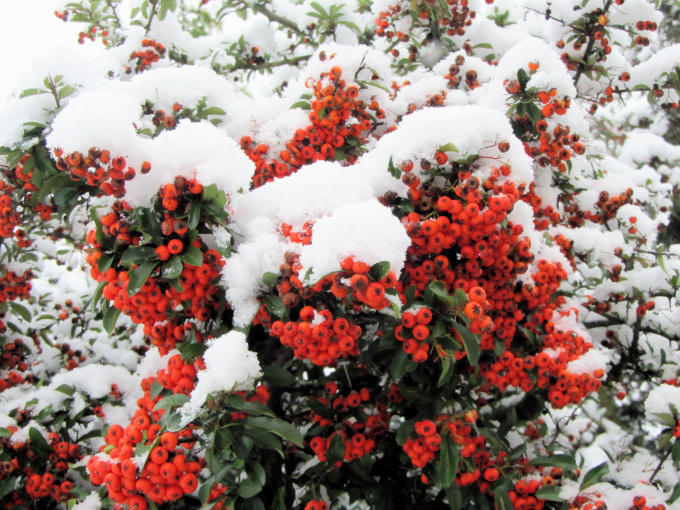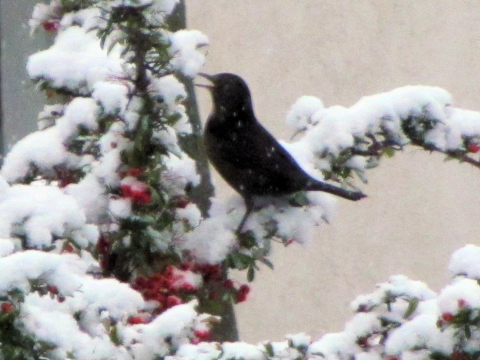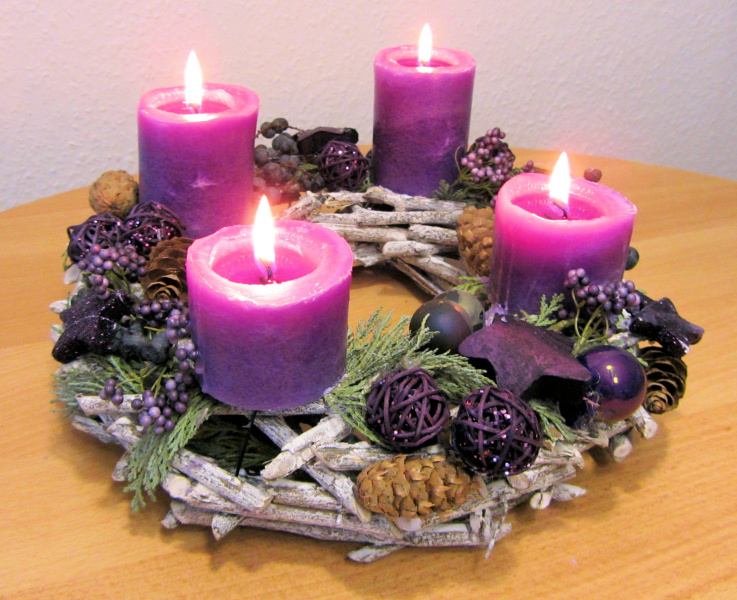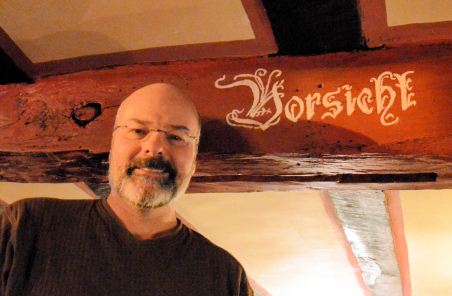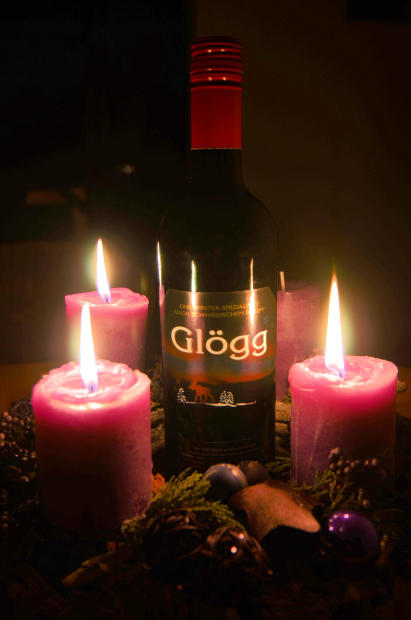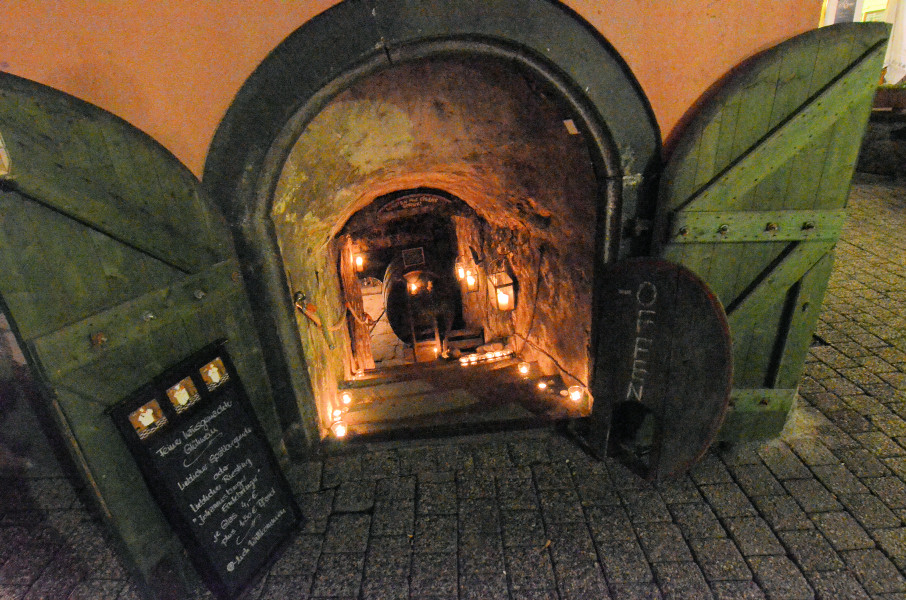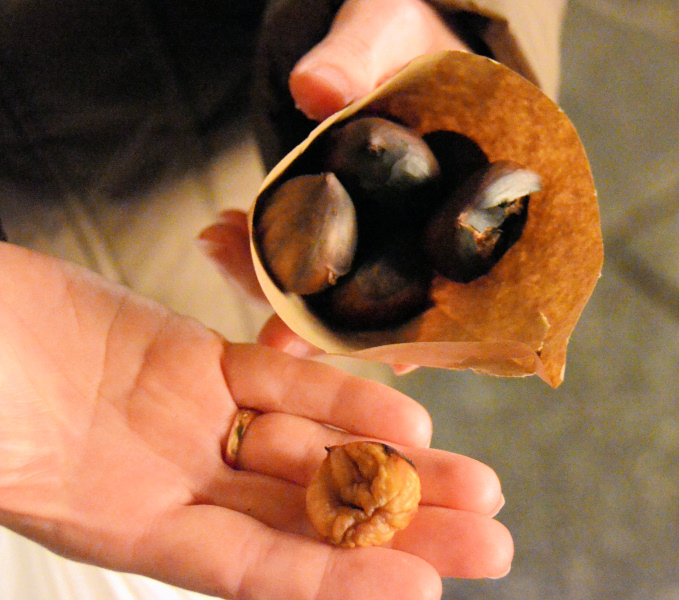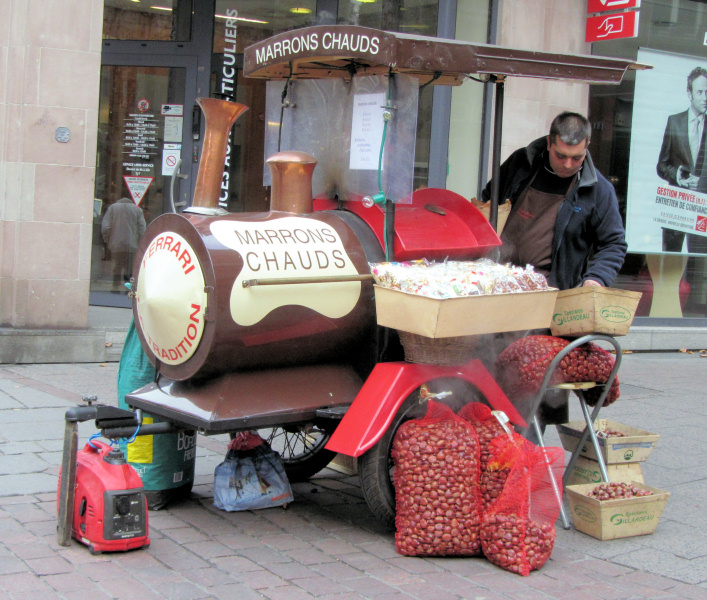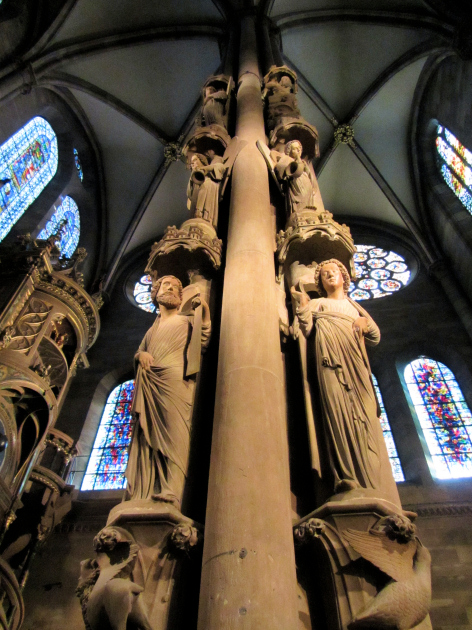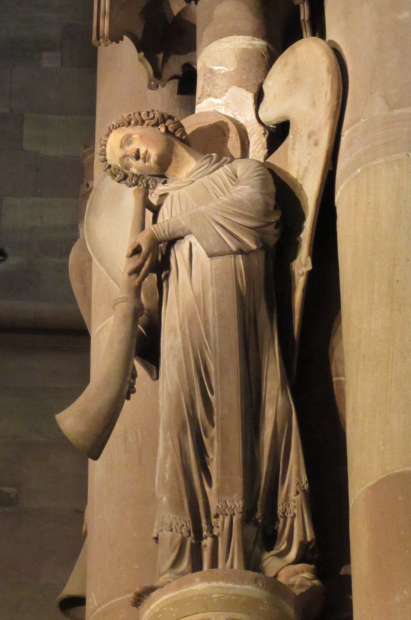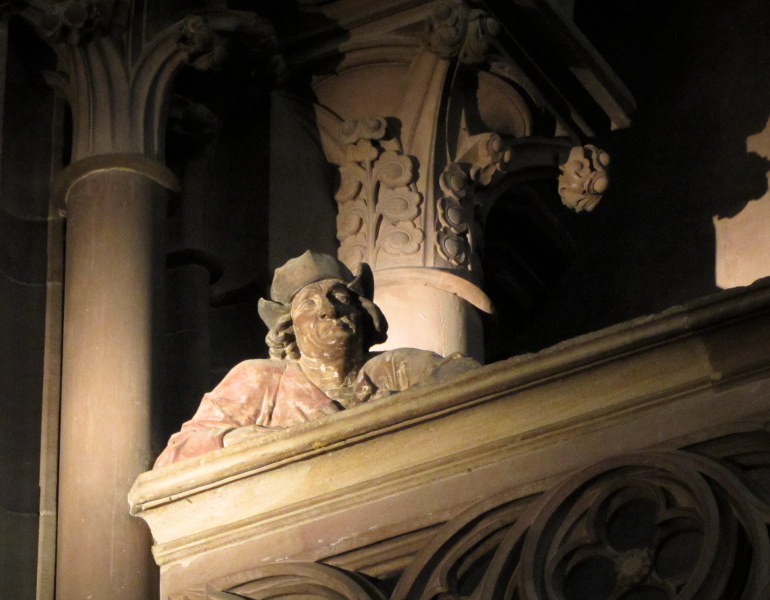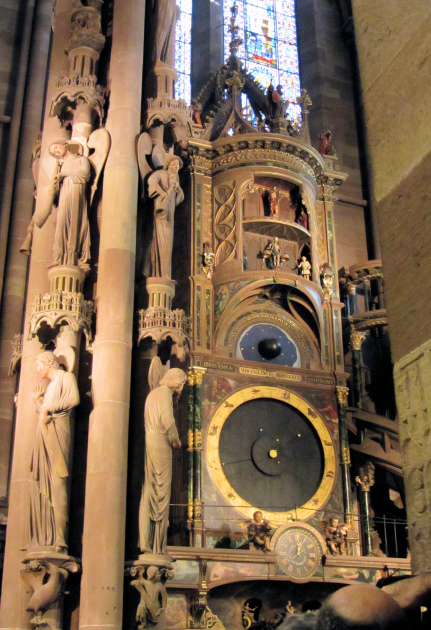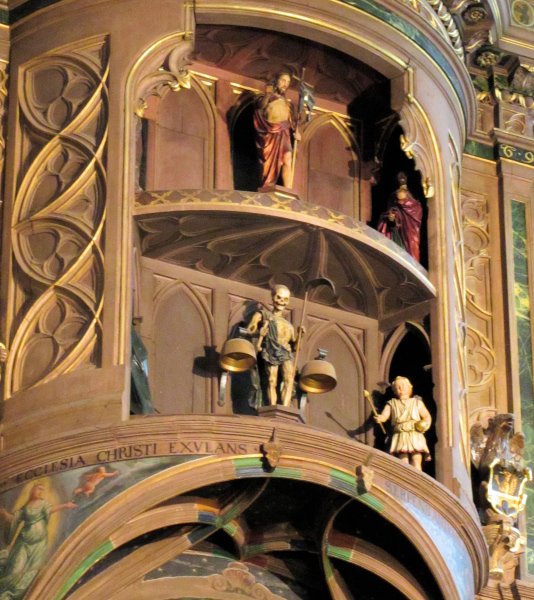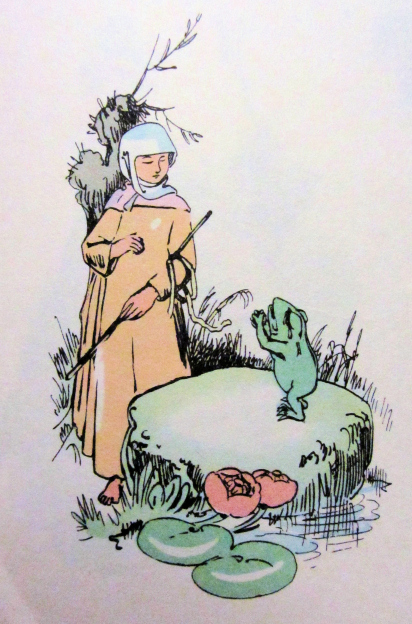
While flipping through the Wilhelm Busch storybook Heidi loaned me, I came across this illustration, and I think we all know what’s going on here. (See my earlier post about this literary star whose stories paved the way for the comic book.)
The frog is saying,
“Erbarme dich, erbarme dich,
Ach, küsse und umarme mich!”
“Have mercy, have mercy, oh, kiss and hug me!”
This line might not work on everybody, but Kätchen is a softhearted girl. She kisses him, and he changes:
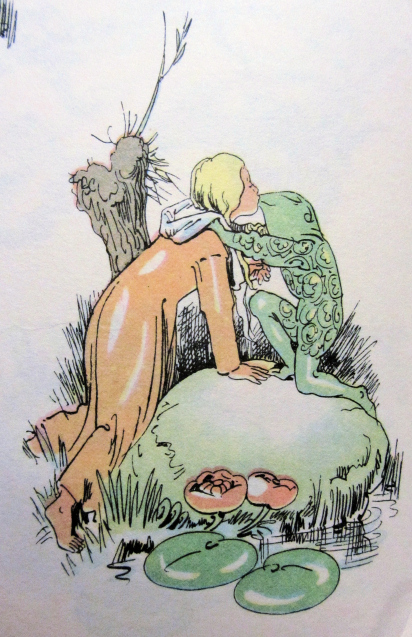
And before another panel has passed, Kätchen has the prince, the castle, and her happy-ever-after.
So far, so good. This is a short version of the classic Frog Prince (Froschprinz) story, as told by the Brothers Grimm. But Wilhelm Busch’s tale is called “Die beiden Schwestern” — “The Two Sisters.” And this is where the retelling takes an interesting turn.
Kätchen has a sister, Adelheid, who is lazy and vain. While Kätchen works, Adelheid lolls around in fine clothes. So we have here the classic good sister-bad sister setup.
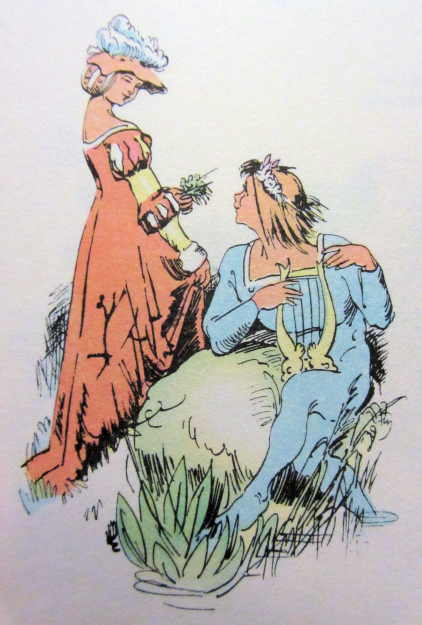
Sure enough, Adelheid goes walking by the water next and meets a handsome stranger. His pickup line is rather more aggressive:
“Ich liebe dich, bin treu gesinnt,
Komm, küsse mich, du hübsches Kind!”
“I love you, I’m not kidding. Come, kiss me, you cutie!”
This is a line that shouldn’t work on anybody! But Adelheid feels that they have a lot in common: they both love Adelheid. So she kisses him.
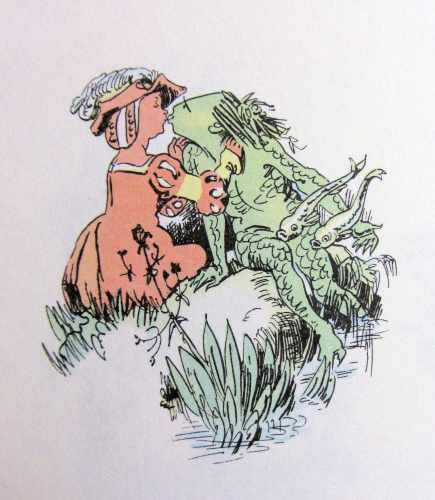
And he changes into the Wasserneck, a water-god or water creature. (I love the fish-lyre.)
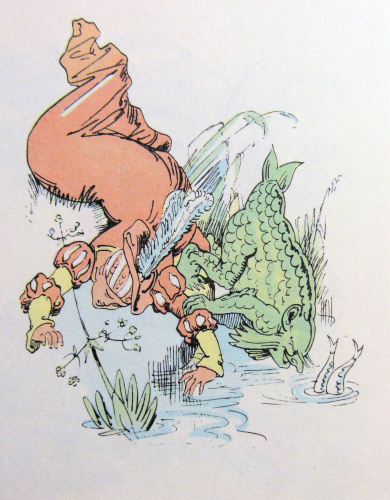
Because she’s kissed him, she now belongs to him.
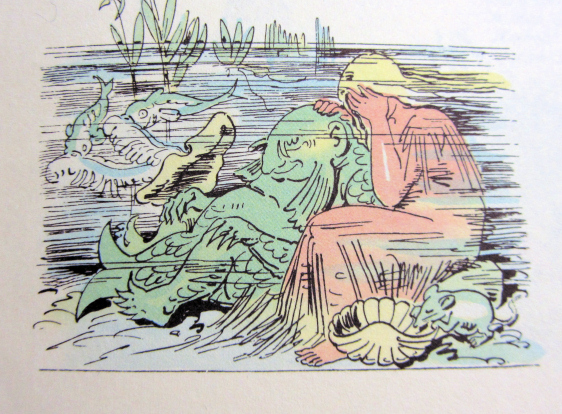
So Adelheid has to stay with the Wasserneck, whom Busch nicknames Wassernickel. He’s a fat old fish, and she has to pat his Glatze (chrome dome).
I’ve read about a planned capture like this, but only in an Irish folktale, and even then, the girl got away when she noticed seaweed in the water god’s hair and sang to him till he fell asleep. So this is a wonderful blend of three different folktale traditions, spiced with Busch’s own unique sense of humor.
To read my latest blog posts, please click on the “Green and Pleasant Land” logo at the top of this page. Photos taken in December, 2011, in Rodenbach, Germany. Text copyright Clare B. Dunkle. Photos are not subject to copyright as they are faithful reproductions of old, public domain, two-dimensional works of art.

